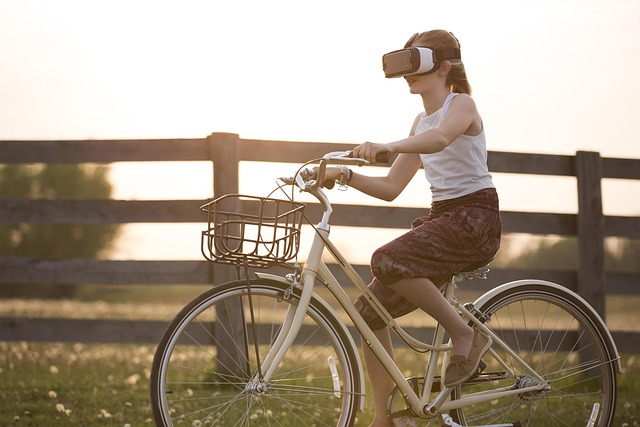In the rapidly evolving landscape of higher education, educators are constantly seeking new ways to engage students, foster deeper understanding, and simulate complex real‑world scenarios. A growing body of research points to immersive technologies—particularly virtual reality (VR), augmented reality (AR), and the broader metaverse—as powerful allies in this quest. These tools together form a virtual teaching methodology that transcends the limitations of conventional classrooms, offering interactive, contextual, and adaptive learning environments that can be accessed from anywhere in the world.
Understanding the Core Technologies
At the heart of this emerging pedagogy lie three interrelated technologies. VR creates a completely artificial, computer‑generated environment that users can explore with headsets, motion controllers, and sometimes haptic feedback. AR overlays digital content onto the real world, allowing students to manipulate virtual objects while remaining physically present. The metaverse extends both concepts by providing a persistent, shared space where participants can interact with each other, with learning objects, and with persistent narratives across sessions and devices.
- VR: Immersive, fully controlled digital spaces.
- AR: Contextual overlays that enhance physical surroundings.
- Metaverse: A persistent, interconnected environment that supports continuous collaboration.
Why a Virtual Teaching Methodology Matters
Traditional lecture‑based models often struggle to accommodate diverse learning styles and the increasing demand for experiential knowledge. Virtual teaching methodology addresses these gaps by providing hands‑on practice in safe, repeatable settings. For instance, medical students can perform virtual surgeries, engineering students can build and test prototype assemblies, and language learners can converse in simulated cultural contexts—all without the logistical constraints of physical labs or travel.
“The shift to immersive learning is not merely a technological upgrade; it represents a paradigm change in how knowledge is constructed and shared.”
Design Principles for Effective Immersive Learning
Creating compelling virtual learning experiences requires careful attention to pedagogy, user experience, and accessibility. Key principles include:
- Alignment with Learning Objectives: Every interaction should serve a clear educational goal, whether it’s reinforcing conceptual understanding or developing procedural skills.
- Interactivity and Agency: Learners must be able to manipulate their environment, make decisions, and see the consequences of their actions.
- Scaffolded Complexity: Starting with simple tasks and gradually increasing difficulty helps maintain motivation and reduces cognitive overload.
- Multimodal Feedback: Visual cues, auditory prompts, and haptic signals provide immediate reinforcement and guide learners toward mastery.
- Accessibility and Inclusivity: Designing for a range of physical abilities, visual and auditory preferences, and varying levels of technological proficiency ensures broader reach.
Benefits Across Disciplines
Empirical studies demonstrate tangible gains from integrating VR and AR into curricula:
- Enhanced Spatial Reasoning: 3D visualization in chemistry and physics improves conceptual modeling.
- Improved Retention: Experiential learning in VR leads to higher long‑term recall compared to text‑based study.
- Increased Engagement: The novelty and interactivity of immersive environments boost student motivation.
- Collaboration Opportunities: In the metaverse, learners can work in real time across geographic boundaries, fostering teamwork and cultural exchange.
Addressing Common Challenges
Despite its promise, virtual teaching methodology faces practical hurdles. Technical barriers such as high hardware costs, limited bandwidth, and software compatibility can impede widespread adoption. Pedagogical concerns include ensuring alignment with accreditation standards and avoiding superficial “wow” effects that distract from learning outcomes. Moreover, user fatigue—commonly known as VR sickness—can limit session length for some students.
Strategies for Overcoming Barriers
Institutions and educators can adopt several tactics to mitigate these challenges:
- Hybrid Models: Combine VR/AR modules with traditional instruction to balance immersion with classroom dynamics.
- Open‑Source Platforms: Leverage community‑driven tools that reduce licensing costs while encouraging customization.
- Incremental Rollouts: Start with pilot courses, gather data, and refine before scaling.
- Faculty Development: Offer workshops and ongoing support to help instructors design effective immersive content.
- Inclusive Design: Engage students early in the design process to surface accessibility needs and preferences.
Implementing a Virtual Teaching Methodology in Practice
Successful implementation hinges on a systematic approach that integrates technology, pedagogy, and assessment. The following framework outlines key steps:
- Needs Analysis: Identify course objectives that benefit most from immersive experiences.
- Resource Mapping: Evaluate available hardware, software, and technical support.
- Content Creation: Collaborate with instructional designers, subject matter experts, and XR developers to build engaging modules.
- Student Onboarding: Provide tutorials and acclimation sessions to reduce anxiety and technical friction.
- Assessment Design: Align evaluation methods—such as performance tasks, reflective journals, and peer reviews—with immersive activities.
- Continuous Improvement: Collect feedback, analyze learning analytics, and iterate on the experience.
Case Study: Virtual Field Trips in Environmental Science
One notable example is a university that integrated VR field trips into its environmental science curriculum. Students donned headsets to explore coral reefs, wetlands, and polar ecosystems, interacting with data overlays that highlighted key ecological indicators. The immersive experience resulted in a 35% increase in exam scores and a reported boost in students’ motivation to pursue research projects related to conservation.
Future Directions for Virtual Teaching Methodology
The convergence of VR, AR, and metaverse platforms is poised to reshape education in ways that are only partially imagined today. Emerging trends include:
- Artificial Intelligence Integration: Adaptive learning agents that personalize content in real time based on learner performance.
- Cross‑Platform Interoperability: Standards that allow content to flow seamlessly between devices, ensuring that a student can switch from a VR headset to a mobile phone without losing progress.
- Persistent Learning Environments: Metaverse spaces that maintain student presence, enabling ongoing collaboration and community building beyond scheduled classes.
- Data‑Driven Pedagogy: Analytics dashboards that provide instructors with actionable insights into student engagement and comprehension within virtual spaces.
- Ethical and Equitable Design: Policies that safeguard privacy, promote inclusive access, and prevent the deepening of digital divides.
Conclusion
Virtual teaching methodology represents a significant evolution in educational practice, harnessing the immersive power of VR, AR, and the metaverse to create richer, more engaging, and more accessible learning experiences. While challenges remain—technical, pedagogical, and ethical—careful design, iterative implementation, and a commitment to student‑centered goals can unlock the full potential of these technologies. As institutions continue to experiment and innovate, the next generation of learners will benefit from environments that not only convey knowledge but also transform the way that knowledge is discovered and applied.


